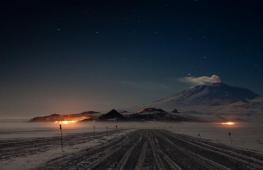When does spring begin, when does summer begin, when does autumn begin, and when does winter begin?
The beginning and end of the four seasons in different countries of Europe and America are counted by two methods - astronomical and calendar. In addition, there are meteorological, phenological and cultural principles for determining the beginning of the seasons of the year.
In Russia, it is customary to count according to the calendar principle, so March 1 is congratulated on the first day of spring, and March 8 is considered a spring holiday. But if you read the books of American writers, you can notice turns of speech like "it was at the end of winter, March 10." The thing is, it's in the US. In Canada and many European countries, it is customary to count the beginning of the seasons according to the astronomical principle.

According to the astronomical principle, the beginning of the seasons falls on the days of the solstice:
- Spring(March 20 or 21);
- summer(20 or 21 June);
- autumn(September 22 or 23);
- winter(December 21 - 22).
But the solstice in different years falls on different days (the difference is 1 - 2 days). Therefore, for convenience, in countries where the astronomical method is used, the new season usually starts on the 21st of the corresponding month. Therefore, it is believed that Catholic Christmas is a holiday that falls at the beginning of winter. However, in everyday life, many Europeans use a simpler calendar principle.
This difference in approach often surprises expats and travelers. It must be taken into account when reading national literature (however, translators usually give explanations in footnotes in such cases).
The astronomical approach also explains the reason for the widespread start of summer holidays in Europe at a later time than in Russia. The end of holidays in European countries often falls in mid-September, which also corresponds to the end of the main holiday season.
From a meteorological point of view, the astronomical principle for most European countries is closer to the real beginning of the seasons than the calendar one. December, although it is the darkest month of the year, is usually less cold than March (this is due to climatic inertia - the earth, which has accumulated heat, parts with it more slowly than it heats up). The beginning of June is usually cooler than the beginning of September (this is especially noticeable at sea).
But from the point of view of meteorologists and climatologists, there is no exact date for the beginning of the seasons at all! Winter comes at a time when the average daily air temperature, having stepped over 0 C, tends to decrease. Therefore, in Yakutia, for example, winter sets in at the end of September, and in Krasnodar at the beginning of January. And the summer, which comes with the transition from the average daily air temperature of +15 C upwards, does not come at all in some regions of Russia. For example, in Murmansk it happens only in warm years.

In different eras in different countries, the beginning of a particular season was determined according to cultural and religious traditions. In Ireland, for example, August refers to the autumn months, according to Celtic traditions. And in Russia, until the 18th century, the seasons were counted in accordance with major holidays: spring came on the Annunciation (March 25) and lasted until the Nativity of John the Baptist (June 24).
Finally, there is also the phenological principle of determining the onset of a new season - according to the behavior of nature. According to this principle, spring will come when thawed patches appear in the field. And it will end - when the wild rose blooms.


